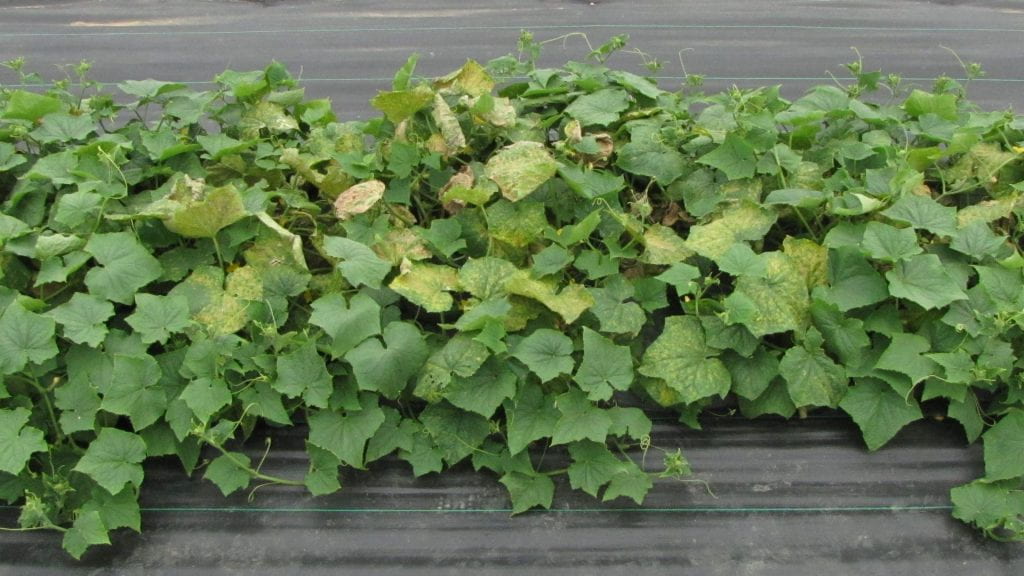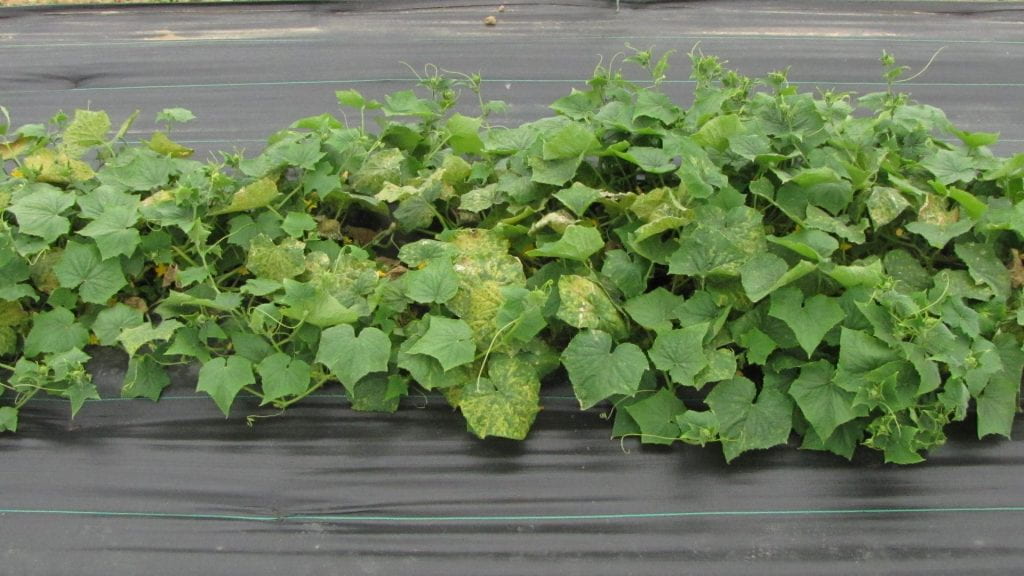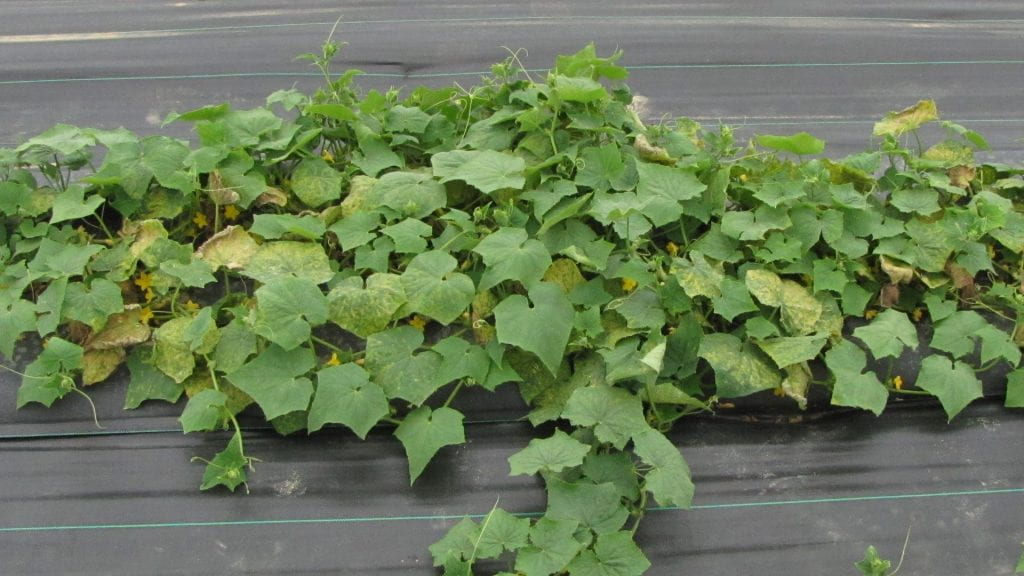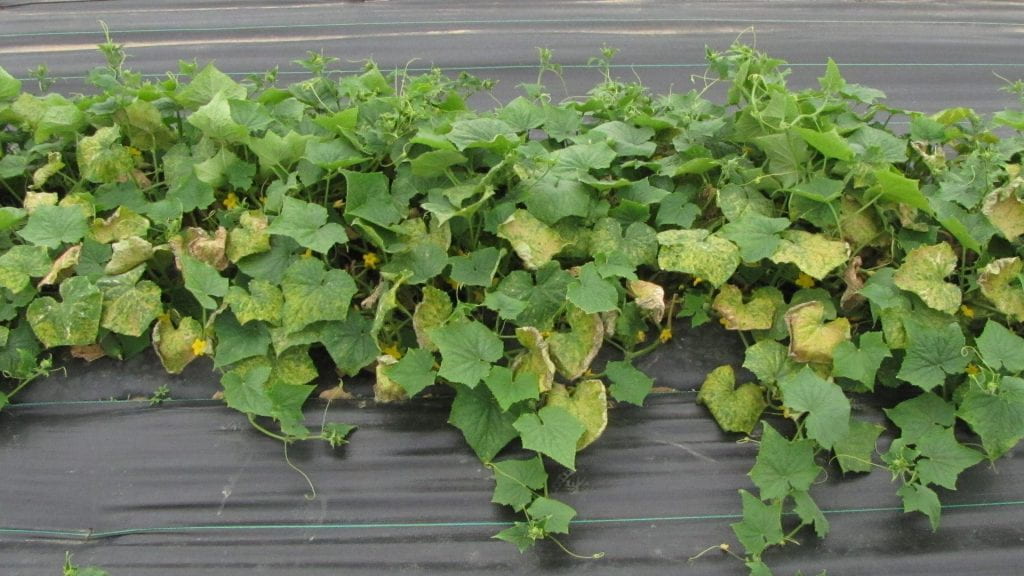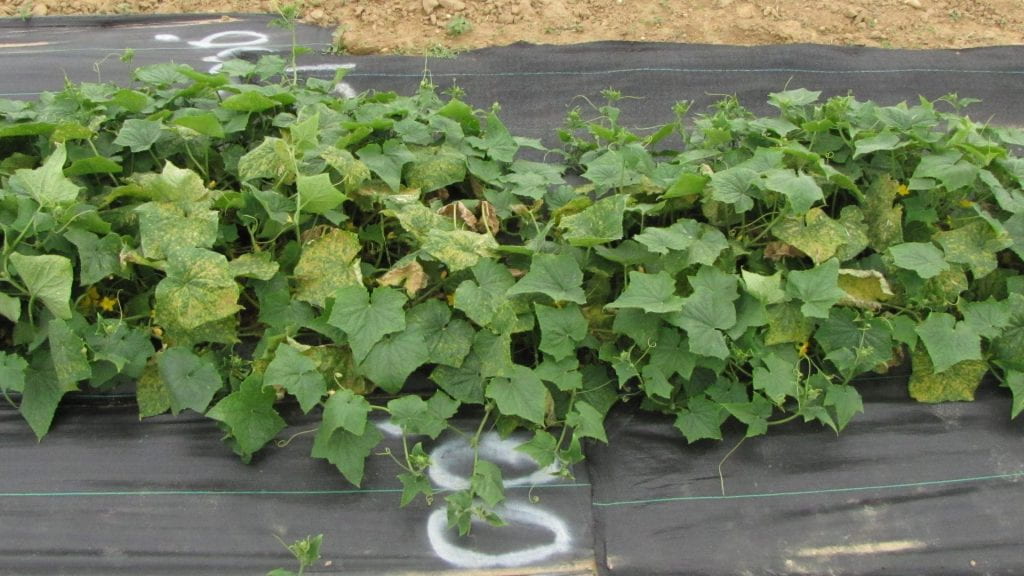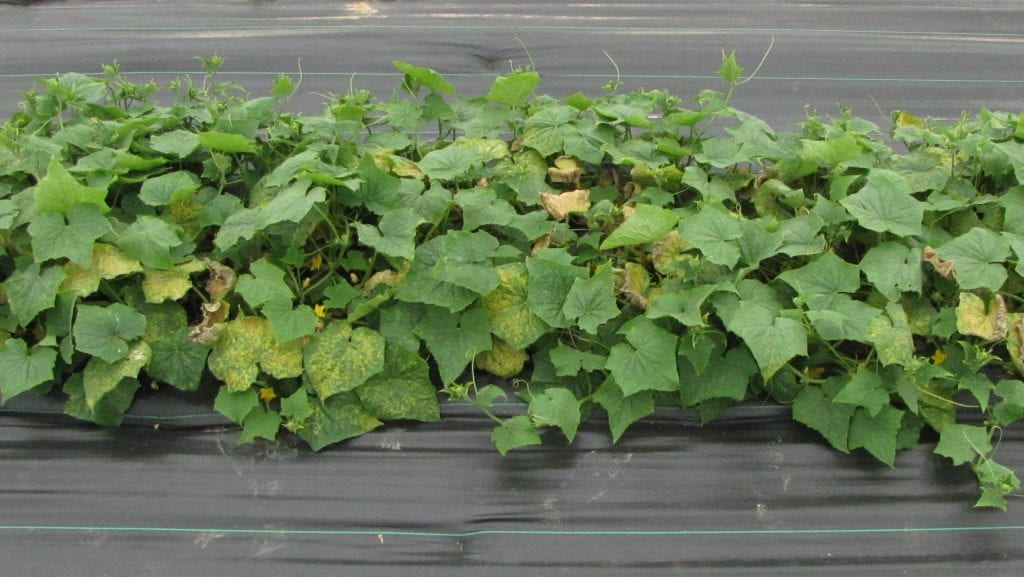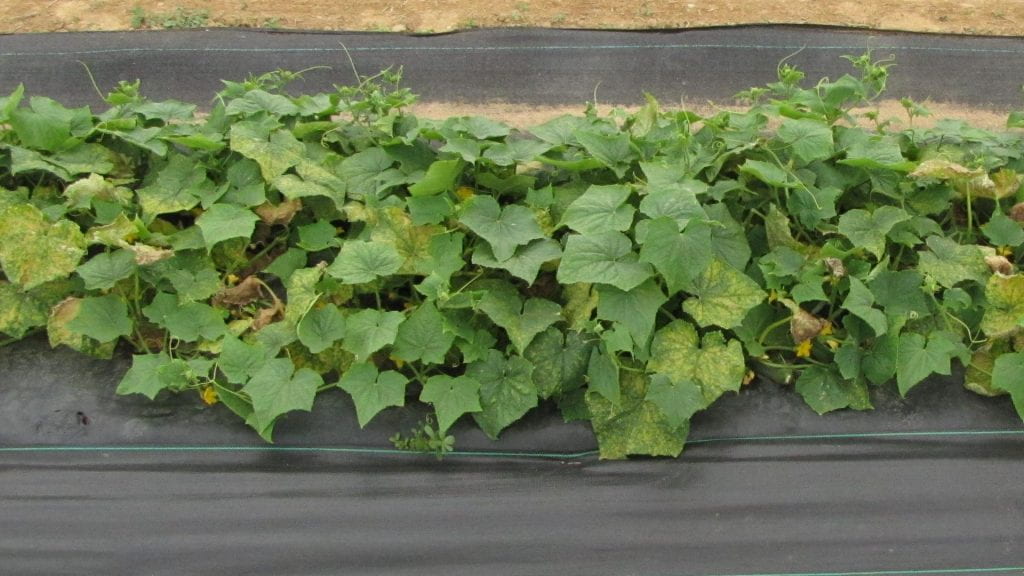See also:
- List of biopesticides for managing cucurbit downy mildew organically
- Webpage with results from other’s evaluations of biopesticides for vegetable diseases
Evaluations of Biopesticides and other Organic Fungicides
Replicated experiments conducted under field conditions at the Cornell University research facility on Long Island have mostly been evaluations of products approved for or in development for organic production.
Applications were started before symptoms were seen (preventive schedule) and made on a weekly schedule to cucumber using a backpack sprayer, except where noted otherwise. Variety Dasher II or Marketmore 76 was used in most experiments. Natural inoculum (wind-dispersed spores) were relied upon. Downy mildew severity was assessed several times on a weekly schedule by estimating incidence of symptomatic leaves and then rating average severity on the affected leaves. These measurements were used to estimate canopy severity. For more details about the procedures and results, including data table, see report pdf files linked below in reference section by year of report publication (plus letter when multiple reports in same year), which is one year after experiment conducted.
Results document that this disease cannot be effectively managed with just biopesticides likely because they only have contact activity (resistance is not being induced by products with this activity) and it is difficult to deliver fungicide directly to the underside of leaves with cucurbit crops. Their inherent activity for this disease may also be a factor. Some experiments included a treatment with conventional, targeted fungicides to serve as a measure of maximum achievable control under the conditions. In 2011 this treatment was also ineffective likely because disease onset was late and severity remained low.
Products evaluated singly:
Applied alone each time. Rate is per acre unless specified otherwise. Variety with low level of resistance used unless stated otherwise. Year is when published in list of reports below.
- Actinovate 12 oz + Biolink was somewhat effective based on 2 Oct assessment (after 4 applications); not 9 Oct one. Two applications before symptoms seen (2009).
- Actinovate 12 oz was somewhat effective; effective at 2 assessments; other treatments more effective. Applications started day after symptoms seen (2010).
- Aviv 30 fl oz/100 gal was ineffective as was copper; see below for information and photographs (2021).
- Copper (NuCop HB 2 lb) was somewhat effective based on 2 Oct assessment (after 4 applications); not 9 Oct one. Two applications before symptoms seen (2009). But next year was 1 of the 3 most effective treatments, as effective as conventional fungicide standard (mancozeb followed by chlorothalonil). Applications started day after symptoms seen (2010). Nordox 75WG 1.25 lb was moderately effective (2017). Kocide 3000-O 1.25 lb was ineffective based on all variables except AUDPC (summation measurement) for incidence of leaves with symptoms in 2022; see below for information and photographs (2021 and 2022).
- Howler 5 lb was ineffective as was copper; see below for information and photographs (2021).
- LifeGard 4.5 oz/100 gal was ineffective, but it is recommended used as part of a program, however the program tested with LifeGard was ineffective. Susceptible (Straight Eight), moderately resistant (Bristol), and highly resistant (DMR 401) varieties were used. Applications started 26 days before symptoms seen (2019).
- Milagrum Plus 60 oz was ineffective (2017).
- PathoCURB 1% (aka Trillium and Tril-21) was ineffective as was copper based on all variables except AUDPC (summation measurement) for incidence of leaves with symptoms in 2022; see below for information and photographs (2021 and 2022).
- Serenade MAX 3 lb provided limited control; effective at 1 assessment; other treatments more effective. Applications started day after symptoms seen (2010).
- Regalia 0.5% provided limited control; effective at 1 assessment; other treatments more effective. Applications started day after symptoms seen (2010).
- Serifel 10 oz was ineffective as was copper; see below for information and photographs (2022).
- Sonata ASO 4 qt was somewhat effective; effective at 2 assessments; other treatments more effective. Applications started day after symptoms seen (2010).
- Sporatec 1 qt was not as effective as other organic fungicides tested (2009).
- Sporatec 1 qt + the adjuvant Biolink 2 fl oz/gal was 1 of the 3 most effective treatments, as effective as conventional fungicide standard (mancozeb followed by chlorothalonil). Applications started day after symptoms seen (2010).
Note: Sporatec has been replaced by Sporan EC2 - Taegro 3.5 oz was somewhat effective based on 2 Oct assessment (after 4 applications); not 9 Oct one. Two applications before symptoms seen (2009).
- Taegro 3.5 oz/100 gal provided limited control; effective at 1 assessment; other treatments more effective. Applications started day after symptoms seen (2010).
- Theia 3 lb was ineffective as was copper; see below for information and photographs (2021 and 2022).
- Timorex Gold 0.75% was somewhat effective; effective at 2 assessments; other treatments more effective. Applications started day after symptoms seen (2010).
Programs with multiple products evaluated:
- Aviv 30 fl oz/100 gal + Timorex ACT 35 fl oz was ineffective as was copper; see below for information and photographs (2021).
- Howler 5 lb alternated with Theia 3 lb was ineffective as was copper; see below for information and photographs (2021).
- Organocide 1 oz/gal + NuCop HB 1 lb was 1 of the 3 most effective treatments, as effective as conventional fungicide standard (mancozeb followed by chlorothalonil). Applications started day after symptoms first seen (2010).
- PathoCURB 1% (aka Trillium and Tril-21) alternated with Kocide 3000-O was ineffective as was copper applied weekly; see below for information and photographs (2021 and 2022).
- Regalia 3 qt/A alternated with Double Nickel 1.5 lb + Cueva 2 qt was ineffective applied to a moderately resistant variety. Applications started day symptoms first seen (2019).
- Regalia 63 fl oz + Stargus 87 fl oz (applied in 2021 as the experimental MBI-121 2 qt) was ineffective as was copper; see below for information and photographs (2021).
- Regalia 63 fl oz + Stargus 87 fl oz alternated with Kocide 3000-O was ineffective as was copper applied weekly; see below for information and photographs (2022).
- LifeGard 4.5 oz/100 gal was ineffective added to previous program with 4 applications before symptoms seen and included with first Regalia application (2019).
Products evaluated that are not commercially available:
- Double Nickel 55 LC 3 qt followed by Forticept Agro 0.66 %v/v was ineffective (2017).
Reports with results listed above:
- McGrath, M. T., and Fox, G. M. 2009. Efficacy of fungicides for managing downy mildew in organically-produced cucumber, 2008. Plant Disease Management Reports 3:V116.
- McGrath, M. T., and Fox, G. M. 2010. Efficacy of biopesticides for managing downy mildew in organically-produced cucumber, 2009. Plant Disease Management Reports 4:V123.
- McGrath, M. T., and Hunsberger, L. K. 2011. Evaluation of biopesticides for managing downy mildew in organically produced cucumber, 2010. Plant Disease Management Reports 5:V100.
- McGrath, M. T. and Sexton, Z. F. 2017. Efficacy of fungicides for managing downy mildew organically in cucumber, 2016. Plant Disease Management Reports 11:V023.
- McGrath, M. T. and Sexton, Z. F. 2019. Efficacy of conventional and organic fungicides for managing downy mildew in cucumber, 2018. Plant Disease Management Reports 13:V118.
- McGrath, M. T. and Downing, C. T. 2022. Efficacy of biopesticides for managing downy mildew in cucumber, 2021. Plant Disease Management Reports 16:V100.
- McGrath, M. T. and Downing, C. T. 2023. Efficacy of biopesticides applied alone or alternated with copper for managing downy mildew in cucumber, 2022. Plant Disease Management Reports 17:V058.
Acknowledgment: this research was mostly funded by the IR-4 Project, Biopesticide and Organic Support Program
Below are photographs taken of the 2022 and 2021 experiments, plus some information about results.
2022: The first two applications were preventive. Symptoms of downy mildew were not seen until 5 Aug, 1 day after the third application, and only on one leaf in each of four plots. Incidence of leaves with symptoms remained very low through the fifth application indicating conditions were not very favorable. Incidence ranged from 0.5% to 21% in untreated control on 23 Aug. PathoCURB was the only biopesticide treatment that significantly reduced AUDPC for incidence of leaves with symptoms, which was 932 compared to 1142 for the control. Kocide 3000-O, an organic copper included as a non-biopesticide organic standard for comparison, was also effective based on this variable (959). The integrated program with a biopesticide (Serifel) applied in block alternation with targeted fungicides was the only treatment that provided meaningful control: 34% based on AUDPC for incidence of leaves with symptoms and 60% based on AUDPC values for canopy severity.
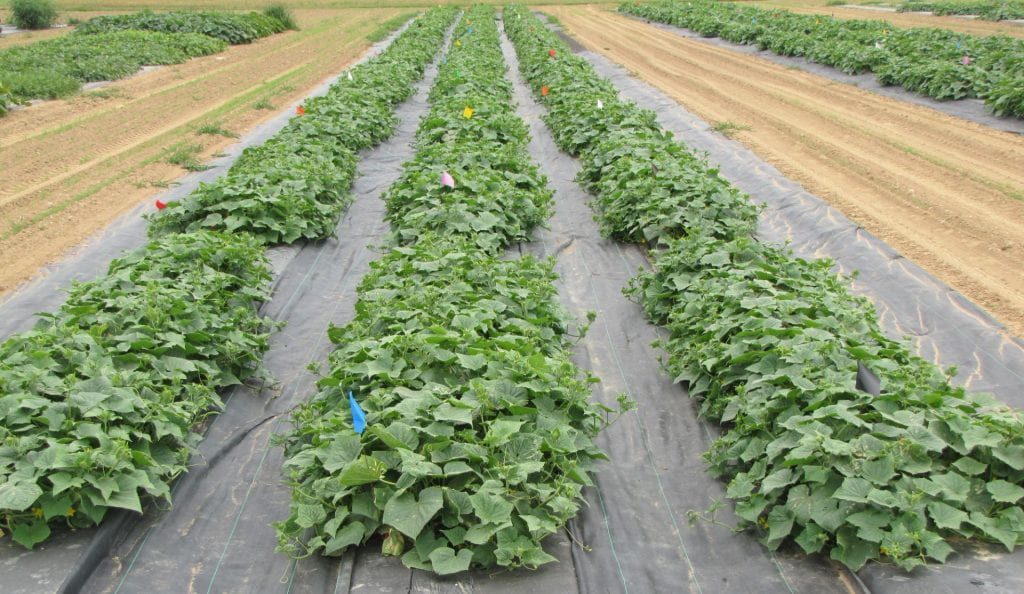
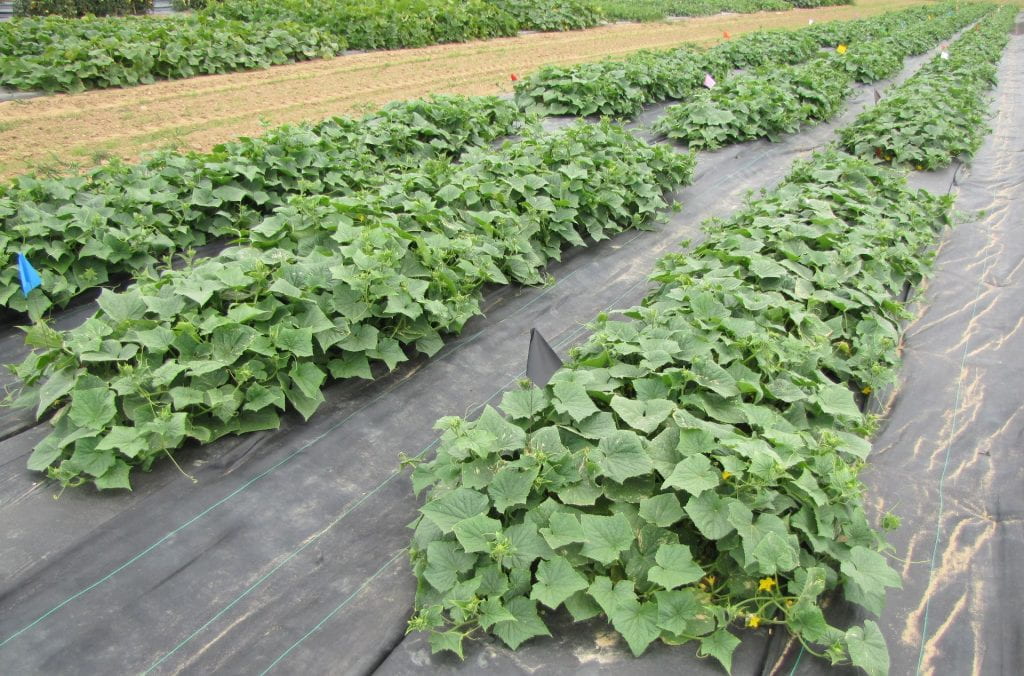
The following photos taken on 29 August, 5 days after the 6th application.
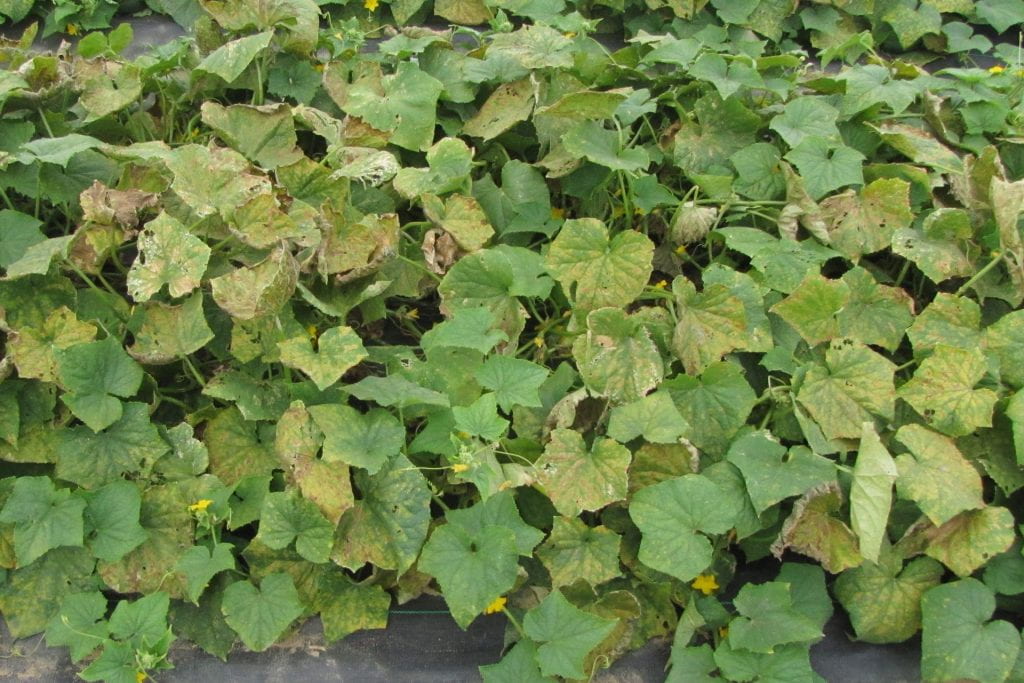
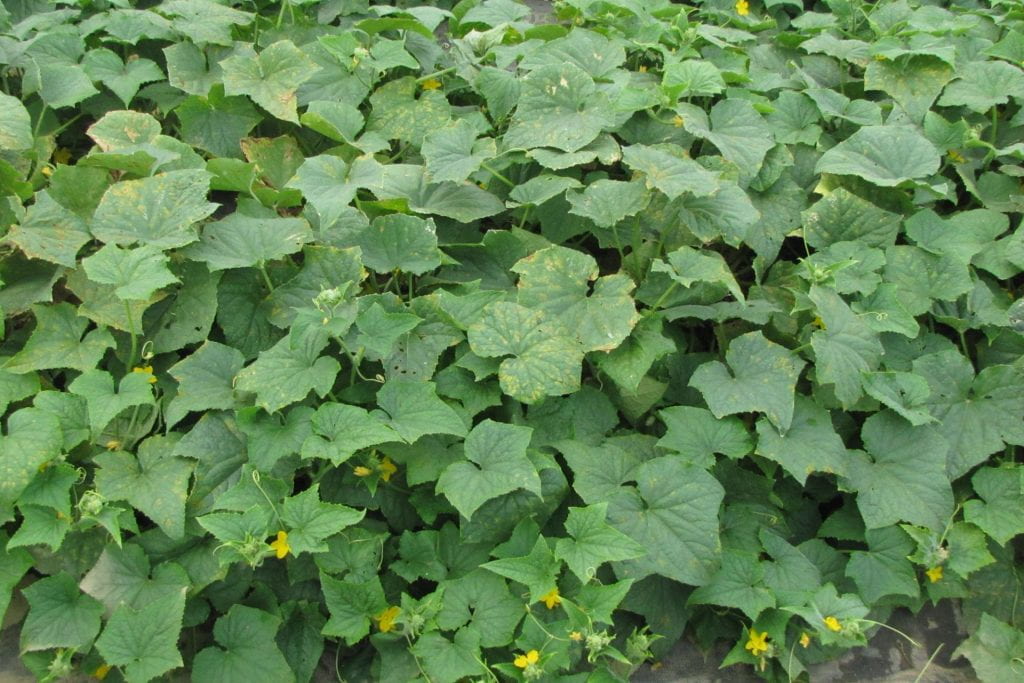
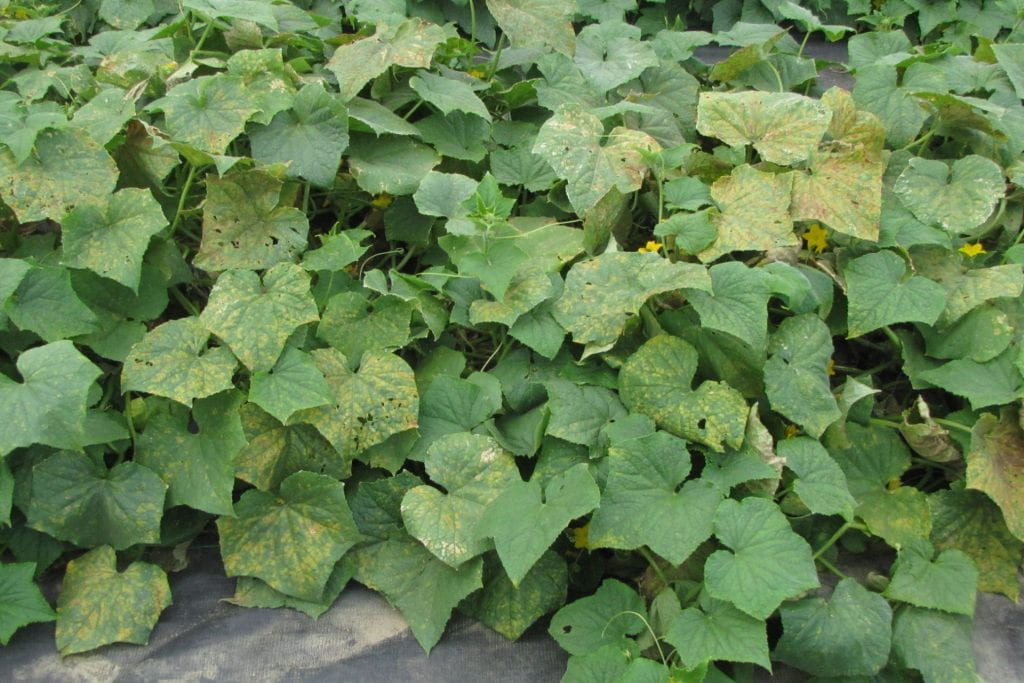

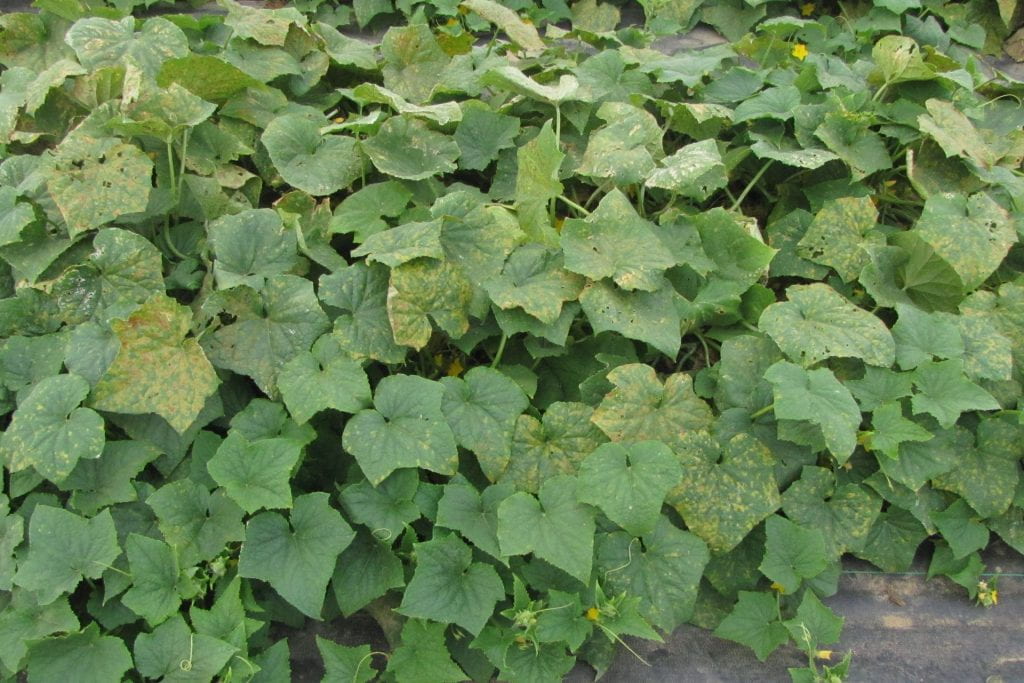
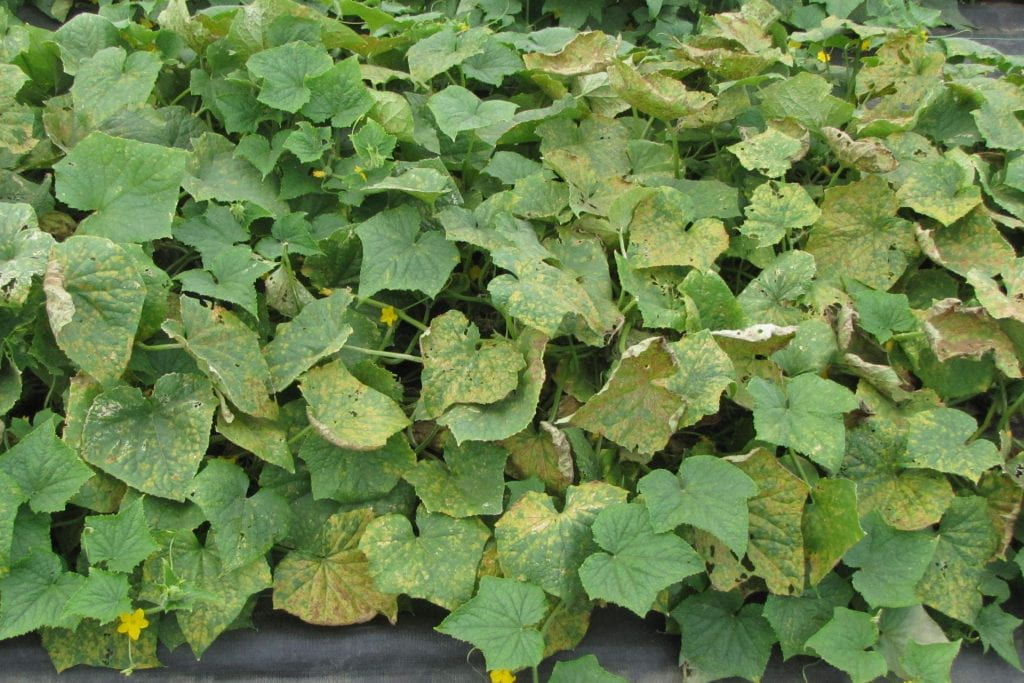
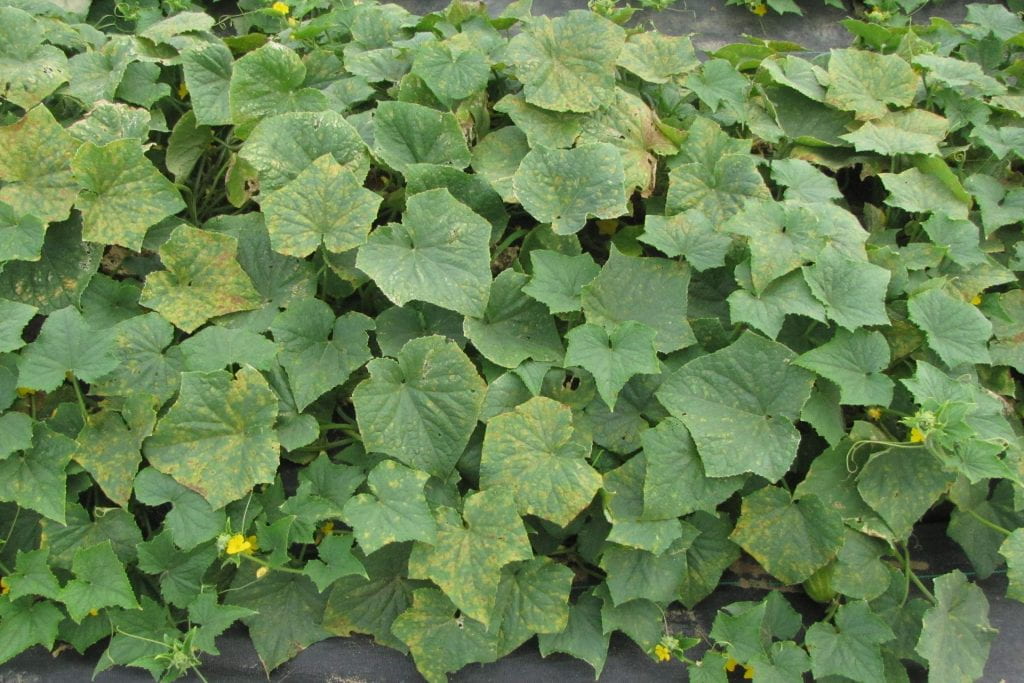
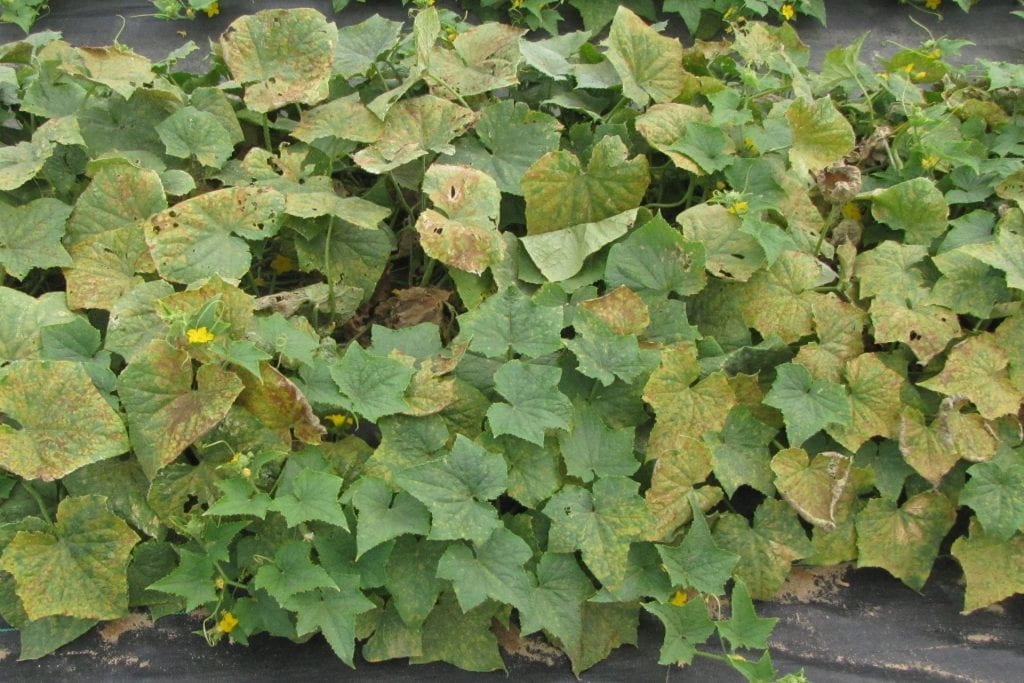
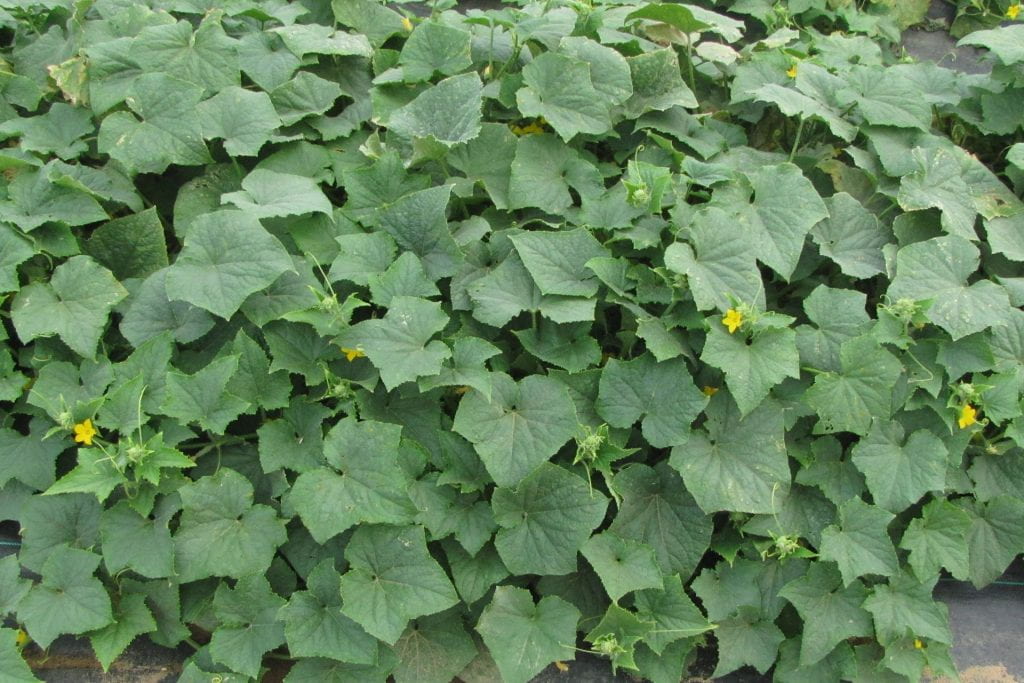
2021: None of the treatments, including the grower standard copper fungicide (Kocide 3000-O), reduced the incidence of leaves with symptoms, severity of symptoms on leaves, canopy severity, or defoliation. Lack of efficacy may be partly due to downy mildew having already started to develop in the experiment at the time of the first application (28 Jul), which is earlier than previous years. It was intended to have 1-2 preventive applications. Additionally, there was extensive rainfall (2.6 in.) with Hurricane Henri on 22 and 23 Aug. The last application was applied early due to rain forecast with remnants of Hurricane Ida starting late on 1 Sep (3.3 in. total). It is possible efficacy of treatments was affected by the impact of these storms on application timing, product residues, and/or disease development.

The following plot photos taken on 19 August, 1 day after the 4th application.

